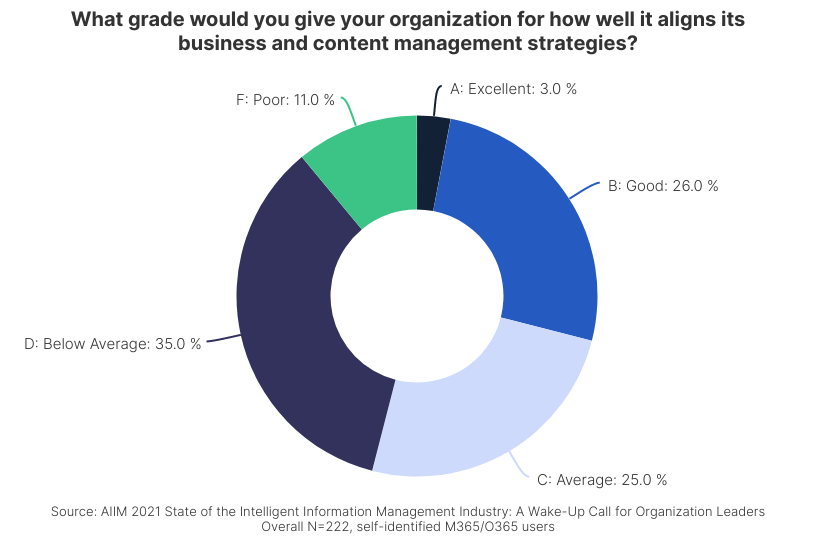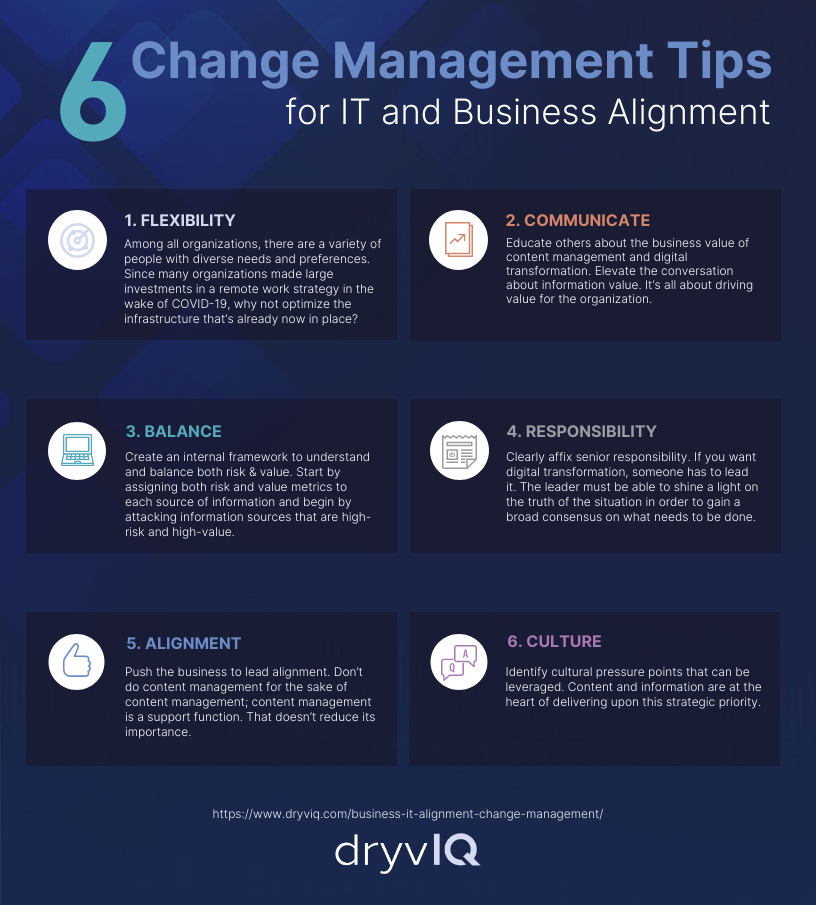The Disconnect Between Business and IT Alignment Strategies
When it comes to your organization’s business and IT alignment strategies, how would you grade it? If you gave your organization anything above a C-, then congratulations! Your organization is doing better than about 70% of the rest.
Considering that most, if not all, organizations surely have a mandate to continuously improve operations, this finding from AIIM may seem surprising. Every company wants to enable digital transformation successfully for better tools, better technology, better productivity, etc. to keep up and stay ahead of the competition. But for digital transformation to be successful, good change management must take priority.
Disconnect Among the C-Suite
It turns out that great minds may not always think alike, because not everyone is grading on the same curve. According to the same AIIM survey, the higher up one was in the organization, the better grade they gave their Business IT alignment strategy:
It’s expected that those lower among organizations are also typically the ones who deal with digital transformation initiatives first-hand. Those that gave a higher grade are more distanced from those scenarios. With a gap among grades of up to 39%, it’s clear many organizations have a large disconnect between their business and IT alignment.
When organizations have such a disconnect between their IT and business departments, they implement digital transformation poorly due to unproductive change management strategies. From one of the AIIM survey participants: “We try to align the two strategies, but it is difficult when you are catching up information management-wise and trying to innovate for the business. So, you end up with partially aligned strategies.”
[Infographic] 6 Change Management Tips for IT and Business Alignment Strategies:
So how do you align your organization’s business and technology strategies? Here are 6 Change Management Tips from AIIM’s very own CIP Experts:
FLEXIBILITY
This will be the key for most organizations post-COVID. Among all organizations, there are a variety of people with diverse needs and preferences. Since many organizations made large investments in a remote work strategy in the wake of COVID-19, why not optimize the infrastructure that’s already now in place?
COMMUNICATE
Educate others about the business alignment value of content management and digital transformation. Elevate the conversation about information value. It’s all about driving value for the organization. That meant transitioning from viewing content as something you just stored, archived, and retained to something of value that you could utilize to extend your work processes.
BALANCE
Create an internal framework to understand and balance both risk and value. There is content everywhere and organizations need to start somewhere. Start by assigning both risk and value metrics to each source of information and begin by attacking information sources that are high-risk and high-value.
RESPONSIBILITY
Clearly affix senior responsibility. If organizations want a successful digital transformation, someone has to lead it. They must be empowered to drive change and supported by everyone. Transformation does not just “happen” – it must be driven and actively pushed. The leader must be able to shine a light on the truth of the situation in order to gain a broad consensus on what needs to be done.
ALIGNMENT
Push the business to lead alignment. It always comes back to what organizations are selling or what they’re making or how organization’s use business processes to get work done, which means that the business needs to lead alignment efforts. Don’t do content management for the sake of content management; content management is a support function. That doesn’t reduce its importance.
CULTURE
Identify cultural pressure points that can be leveraged. Content and information are at the heart of delivering upon this strategic priority. For example, use the cultural norm of customer-centricity to get senior executives to buy into a strategy of centrally managing information instead of having multiple hubs of information.



